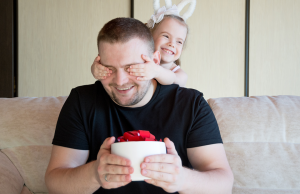
- Transitioning from summer vacation to school can be challenging for children, similar to adults adjusting after a vacation.
- Tips from therapists for a smooth back-to-school transition include gradually adjusting to school routine, organizing their day’s activities, letting them enjoy vacation, preparing for school supplies, and establishing bedtime routines.
- Experts recommend asking children about their concerns, utilizing school support, and providing information to reduce anxiety about school.
- Children may take a few months to adjust to school, and signs of struggle include irritability, stress, low mood, poor socialization, and expressing concerns about school.
- Behavioral issues and academic struggles could indicate the need for professional help, and parents should seek guidance if the child’s struggle persists beyond the first few months.
The transition from the laidback days of summer back to the structured environment of school can often be a challenging one for children. Just as adults might take a while to readjust to work after a vacation, children also require time to settle into their school routine.
Dive into these insightful tips from seasoned therapists to discover invaluable guidance on helping your child navigate the back-to-school transition with confidence. Gain expert advice that will empower you to create a more seamless and supportive experience for your child as they return to the classroom.

How to Help a Child Transition Back to School and Out of Summer Vacation Mode
To navigate the back to school period, it’s crucial to heed the advice of experts like Barbara Thomas, a Licensed Family and Marriage Therapist at Thriveworks. “A parent can help their child’s transition by incrementally working towards their school routine and changing out of vacation mode.” Thomas stresses the importance of:
- Creating a consistent routine: “Set up a schedule that gradually works towards wake times that align more towards school hours.”
- Helping your child stay on track throughout the day: “Organizing their days around a few activities that help hold your child’s attention and focus can also be helpful.”
- Giving them the chance to enjoy their vacation: “Remember to let them enjoy summer time as well and provide a countdown that may be helpful for them to picture when school begins.”
- Helping them get prepared for going back to school: “Make a list of school supplies and make back to school shopping a part of the routine.”
Evan Csir, a Licensed Professional Counselor (LPC) at Thriveworks, also has some expert tips for parents when it comes to back-to-school transitions for kids and teens. According to Csir, it’s recommended that you start:
- Getting your child’s bedtime routine in place at least 1 week before school begins: “As adults, we rely on getting good sleep to help us be successful the next day. The same is true for children. This means letting your child know about the change and give them a heads up each night when that transition begins.”
- Asking your child questions about their concerns: “Are they worried about making friends, or how lunches will be determined? Ask what classes they are looking forward to, who they’re looking forward to seeing again such as a classmate and/or a favorite teacher, who to go to when issues occur, and potential ways to problem solve their issues.”
- Taking advantage of what your school and/or school district offers in terms of support. “Some schools are more willing to give individual tours and introduce families to the teachers. Other schools offer an open house.” Csir affirms that “In general, the more information given to the child tends to reduce the anxiety of going to school.”
How Long Might It Take for a Child to Adjust to Being Back at School?
Understanding the intricacies of a child’s transition back to school is crucial as parents and educators prepare for the upcoming academic year. Thomas offers insightful perspectives on this matter. As Thomas points out, “It may take a few months for a child to adjust back to school. Think about returning to work after vacation and how long that transition back can take you as an adult.”
Thomas concludes, “After a summer break, children may need a few months to get back into the rhythm and routine of their new classroom and adjust to these changes.”
Navigating the challenges of transitioning between grade levels, at any age, is a unique journey for each student, as highlighted by Csir’s observations. In his own words, “Some students just struggle with that transition more than others. Two of them did well and transitioned with minimal difficulty. However, a third client struggled with the course work due to the increased demands from the teachers. It took him a couple of months to adapt and to start liking school again.”
Get mental health help
We provide award-winning mental health services nationwide, with flexible scheduling & insurance coverage. Start your journey this week.
Telltale Signs that a Child Is Struggling with the Back-to-School Transition
Transitioning back into the classroom after nearly 3 months of vacation isn’t always easy. Thomas lays out some of the most common signs that a child may not be adjusting well to returning to school.
These signs include:
- Irritability
- Stress
- Low mood
- Poor socialization skills
- Lack of interest in time together
- Your child voicing concerns about their return to school
“Another sign is that there are reports from their teacher reporting difficulties, indicating these are not just behavioral issues at home,” says Thomas. Csir also adds, “there are numerous signs to be mindful of when your child is struggling with transitioning back to school.”
Similarly, Csir recommends that parents remain cognizant of:
- How your child responds to school: “Do they struggle more than usual to get up and go to school—or are they awfulizing their school day before it even begins?”
- Behavioral issues: “Are they physically or verbally aggressive toward their peers? The child reporting that they don’t have any friends or that someone mistreats / bullies them, their attention span and ability to focus on tasks is shorter than usual, as well as your child is struggling to regulate themselves as they may tantrum or cry during the school day.”
Csir also indicates, “Some children, like many adults, do need some downtime to transition and decompress. If they’re more irritable than usual at home, that is usually a sign to get help.”
When to Consider Getting Your Child Professional Help
Csir points out above that behavioral issues and poor academic performance are often tell-tale signs that a professional’s help could be necessary in helping your child transition back into the classroom after a long summer vacation. And as Thomas notes, “It may be helpful for a parent to look into professional help if their child continues to struggle in school for more than the first few months.”
Thomas also adds, “Your child may show signs of emotional reactivity and lack of emotion regulation or ongoing difficulty socializing with their peers. Ask your child about these mental health concerns and be open with them if they voice their feelings and concerns about school. Also teachers are an excellent resource to see if these behaviors happen outside of home and during the school day.”
In conclusion, the back-to-school transition can be a complex journey for children. With patience, communication, and support, parents can guide their children through this period of adjustment, ensuring a smoother start to the academic year. If signs of struggle persist, seeking professional help via child or teen therapy can provide the necessary guidance for both parents and children alike.













